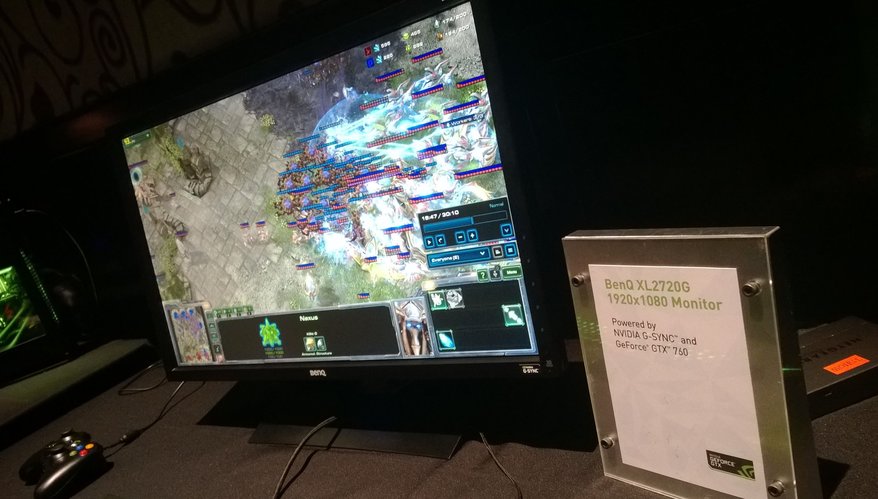Nvidia's smooth G-sync tech impresses at CES 2014

Nvidia's big press conference at this year's CES I was given a reason to go green in the ongoing battle between Nvidia and AMD - G-Sync . It enables the GPU and monitor to work together to ensure frames are delivered to the display consistently and smoothly. Your monitor only updates the frame when the GPU is ready, eliminating screen-tearing and reducing stutter.
The kicker? You need a G-Sync compatible monitor for it to work. I tried the tech on a pair of 27-inch screens from BenQ and Philips, one 120Hz and the other 144Hz, and the difference between G-Sync on and off is pretty darned impressive. Suddenly panning around game environments seems so smooth the motion seems pre-rendered.
A nice, big 2560x1440, IPS, G-Sync enabled panel plugged into a GTX 780 Ti is going to deliver something quite lovely. According to Nvidia's CEO, Oculus CTO John Carmack is quoted as saying 'once you've tried it, you can't go back.' It's Nvidia-only, of course, which means AMD card owners won't have the opportunity to take advantage of the tech.
AMD have their own ace in the form of the Mantle API, however. I've finally seen AMD's Mantle running in-game and the effect of that - bringing true multi-threading into PC gaming - is going to be quite astounding once developers really start playing around with it.
But that's for another discussion when the NDA shackles have been lifted. Suffice to say we've got some tough, but exciting tech choices ahead of us in 2014.
The biggest gaming news, reviews and hardware deals
Keep up to date with the most important stories and the best deals, as picked by the PC Gamer team.

Dave has been gaming since the days of Zaxxon and Lady Bug on the Colecovision, and code books for the Commodore Vic 20 (Death Race 2000!). He built his first gaming PC at the tender age of 16, and finally finished bug-fixing the Cyrix-based system around a year later. When he dropped it out of the window. He first started writing for Official PlayStation Magazine and Xbox World many decades ago, then moved onto PC Format full-time, then PC Gamer, TechRadar, and T3 among others. Now he's back, writing about the nightmarish graphics card market, CPUs with more cores than sense, gaming laptops hotter than the sun, and SSDs more capacious than a Cybertruck.

